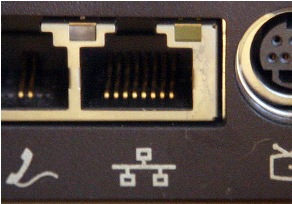Before you begin
Driver updates for Windows 10, along with many devices, such as network adapters, monitors, printers, and video cards, are automatically downloaded and installed through Windows Update. You probably already have the most recent drivers, but if you'd like to manually update or reinstall a driver, here's how:
A library of over 250,000 device drivers, firmware, BIOS and utilities for Windows. If your device does not appear in this list, reseat the cable connected to your computer or try a different port. If your audio device shows up as an Unknown device or has a yellow caution symbol, you will need to uninstall the device and then reinstall the latest driver (see Driver Reinstall below). A library of over 250,000 device drivers, firmware, BIOS and utilities for Windows.
Update the device driver
In the search box on the taskbar, enter device manager, then select Device Manager.
Select a category to see names of devices, then right-click (or press and hold) the one you’d like to update.
Select Search automatically for updated driver software.
Select Update Driver.
If Windows doesn't find a new driver, you can try looking for one on the device manufacturer's website and follow their instructions.
Reinstall the device driver
In the search box on the taskbar, enter device manager, then select Device Manager.
Right-click (or press and hold) the name of the device, and select Uninstall.
Restart your PC.
Windows will attempt to reinstall the driver.

More help
If you can't see the desktop and instead see a blue, black, or blank screen, see Troubleshoot blue screen errors or Troubleshoot black or blank screen errors.
Each time when you connect a new COM device or a USB device (true for modems, smartphones, Bluetooth, serial-to-USB converters, etc.), Windows detects it using Plug-n-Play and assigns it some COM port number in the range of 1 to 255. If this device is connected again, the reserved port is assigned to it. A new device gets the first free COM port number. It often occurs that, when being connected, the external devices create several COM ports at once. In my case after connecting a Bluetooth adapter 10!!! new COM ports has appeared in the system.
A number of applications (quite obsolete, as a rule) are able to address only two-digit COM port numbers and won’t work with COM100 or higher. In the worst cases, these programs work only with COM1-COM9 ports. What if a device has got a higher number? Could the numbering scheme of the reserved COM ports be reset and the assigned ports be deleted? Let’s try to deal with it in Windows 7.
As a rule, you are not able to change the assigned COM port in the hardware properties, since the system says that all “lower” COM ports are already in use.
How to Change a COM Port Number for a Specific Device
First of all, try to reassign the COM port number for a specific COM device manually. Suppose that the necessary COM port is already busy and we would like to free it.
Drivers Djo Port Devices Bluetooth
- Start the Device Manager as follows:
set devmgr_show_nonpresent_devices=1start devmgmt.msc - Select View->Show Hidden Devices in the console menu.
- Expand Ports (COM & LPT) branch and find the device, which is assigned the necessary COM port in the list. (A pale icon means that this COM port is already assigned, but currently the device is not connected) Right-click it and select Uninstall.
- The freed up COM port can be assigned to another device. Find your device in the same branch, and open the Properties window. Then go to the PortSettings tab and click Advanced. In the dropdown list, select the free COM port.
This method is not always useful in trying to free up a busy COM port. Then you will have to make some changes to the registry.
How to Reset COM Port Binding Using the Registry

The information about busy COM ports is stored in CommDB registry key in HKEY_LOCAL_MACHINESYSTEMCurrentControlSetControlCOM Name Arbiter section.
- Open the Registry Editor (regedit) and go to the branch mentioned above.Important! We strongly recommend to back up this registry branch (File -> Export) before doing anything. If something goes wrong, you can get back to the original port configuration.
- The value of ComDB parameter in the binary format determines the list of COM ports reserved in the system. Each bit determines the state of the corresponding port (from 1 to 255). For example, if you need to leave the reservation only for COM3, the hex value of ComDB is equal to 04 (0000 0100) Important! Be very attentive, and don’t add any additional bits to the parameter, or the system will display the BSOD.
- If you have to reset all COM port bindings, change the value of ComDB to 0.Note. In HKEY_LOCAL_MACHINEHARDWAREDEVICEMAPSERIALCOMM section, you can see the list of COM ports connected to the system.
- The HKEY_LOCAL_MACHINESOFTWAREMicrosoftWindows NTCurrentVersionPorts branch contains the list of all assigned COM ports. All unnecessary ports may be deleted. In our example, we’ll leave only COM3 and delete the rest ports.
- Unplug all external devices and restart your computer.
- After the restart, connect the devices in the necessary order. (Reinstall USB-to-serial converters, etc.) All COM ports found by the system will be automatically identified by the system and assigned the COM port numbers one by one.
How to Reduce Windows.edb Huge File Size?
October 19, 2020Managing System Reserved Partition in Windows 10
October 9, 2020How to Restore Deleted EFI System Partition in...
July 29, 2020
Drivers Djo Port Devices Inc
How to Clear RDP Connections History in Windows?
June 9, 2020Drivers Djo Port Devices List
How to Create a UEFI Bootable USB Drive...
June 2, 2020